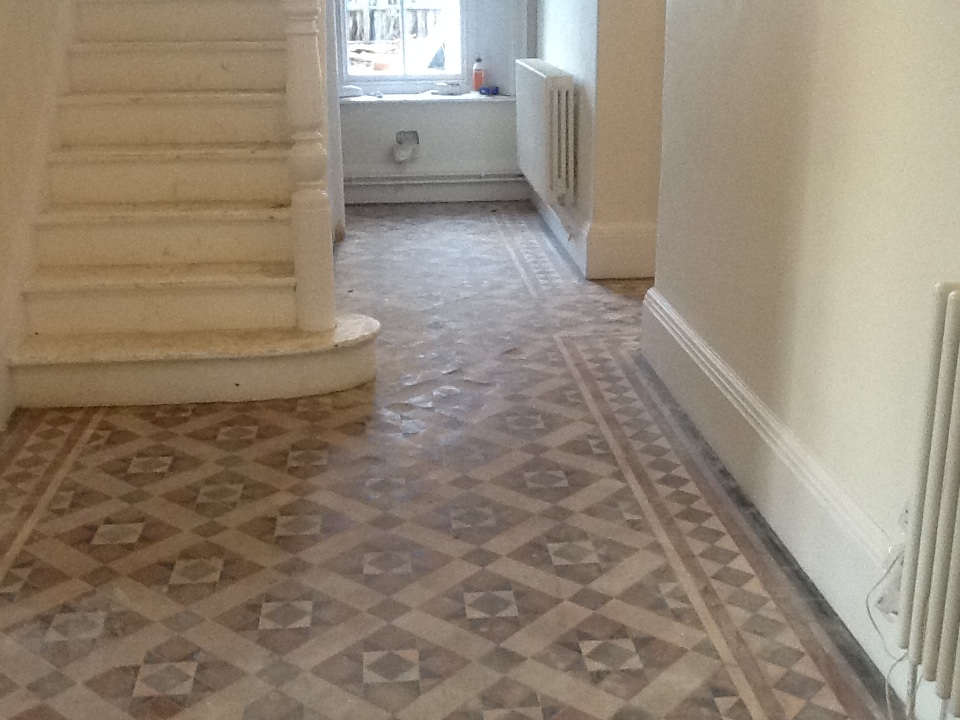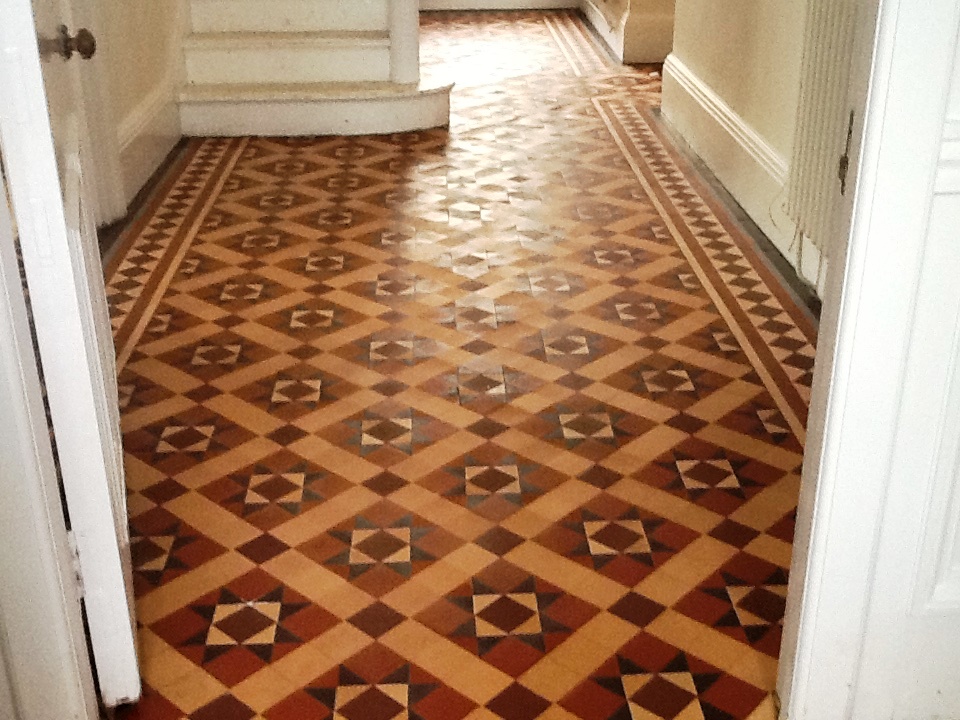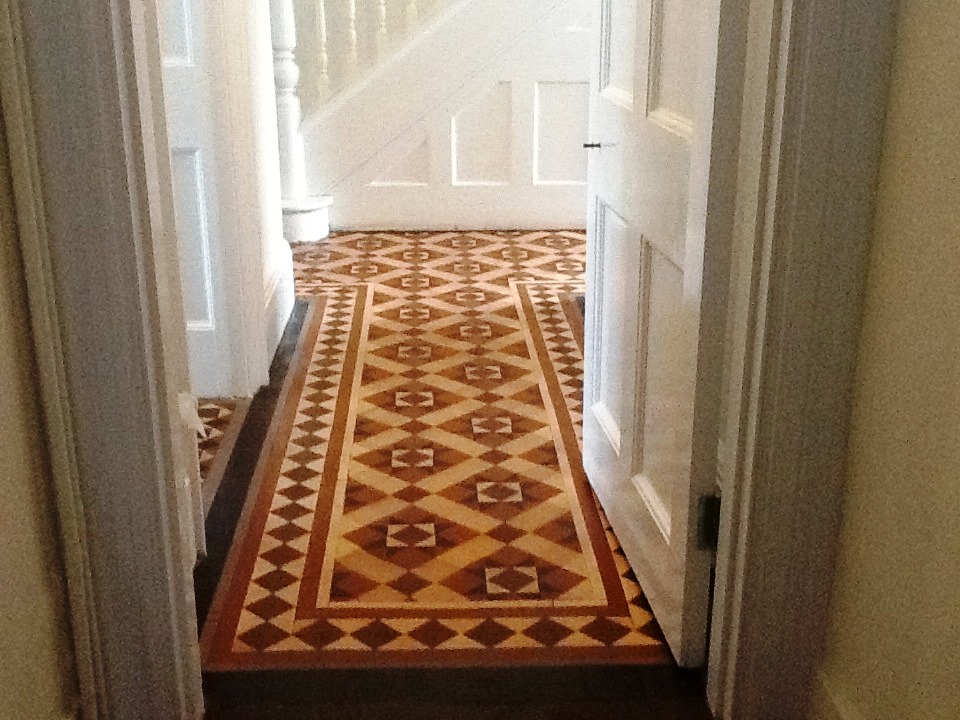This customer asked me to pay a visit following work to refurbish the house and wanted to restore as many original features as possible; work had been going on to restore coving, picture rails, ceiling roses and fireplaces but unfortunately nobody had thought to cover up the beautiful Victorian floor. When I arrived there was plaster dust and splashes of paint all over the floor that needed attention. A quote was given which was accepted and the work was booked in for the following week.
 |
 |
Cleaning Victorian Quarry Tiles
My first course of action was to vacuum the floor to remove any loose debris so I could assess how to proceed. I then applied diluted Tile Doctor Pro Clean with a pump up sprayer and left it to dwell on the tiles for fifteen minutes before working it in with a black scrubbing pad and hand brushes. The now soiled cleaning solution was then rinsed off together with most of the plaster and surface dirt which had come away in the process. I was then left with a few paint splatters which I removed by spot treating by hand with Tile Doctor Remove and Go; it became clear at this stage that the Pro-Clean had not removed all the old sealer and so I decided to spray the whole floor with a dilution of Remove and Go and work it in with brushes, the solution was left for a further ten minutes and then rinsed away with an extraction machine.
Sealing Victorian Quarry Tiles
The floor was left alone to dry for several days with a fan on site to assist the process. The customer wanted the floor to look traditional and requested a matt finish so when I returned to site two coats of Tile Doctor Matt Colour Grow Sealer was applied. Colour Grow is breathable and will allow any damp to evaporate without disrupting the finish, this is important as floors of this age were laid without any damp proof course or membrane which can sometimes result in damp issues.
 |
 |


That’s just typical of a builder to leave the floor unprotected, good job you can always rely on Tile Doctor to sort out the problems no one else will touch.